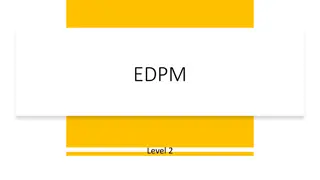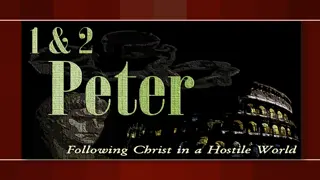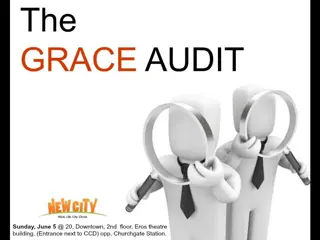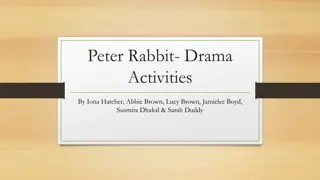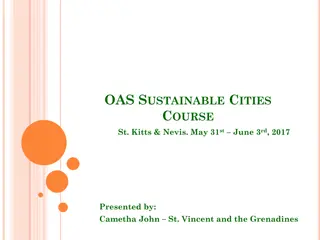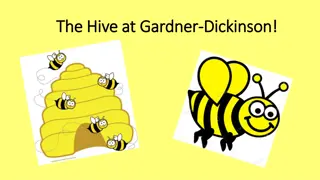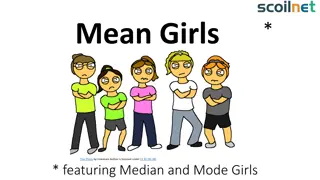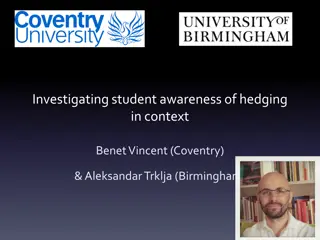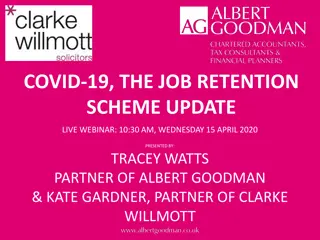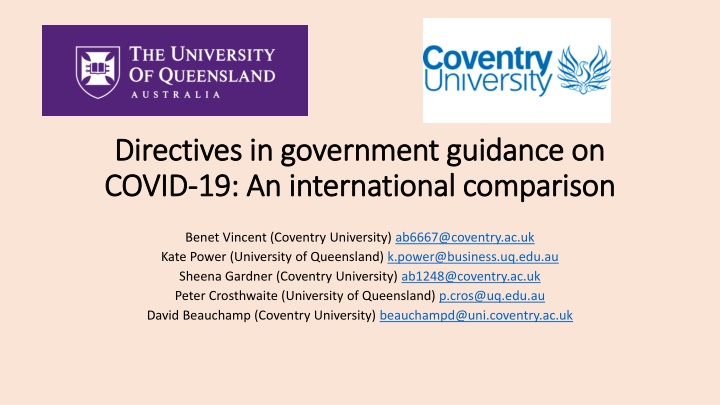
Study on Directives in COVID-19 Government Guidance: An International Comparison
Explore how various political leaders issued directives during the COVID-19 pandemic, analyzing the effectiveness of these directives across different countries and political systems. Data from UK, Scotland, Australia, and New Zealand briefings are examined, providing insights into crisis communication strategies. The study aims to compare the management of the pandemic based on factors like leader gender, political affiliation, and perceived effectiveness.
Download Presentation

Please find below an Image/Link to download the presentation.
The content on the website is provided AS IS for your information and personal use only. It may not be sold, licensed, or shared on other websites without obtaining consent from the author. If you encounter any issues during the download, it is possible that the publisher has removed the file from their server.
You are allowed to download the files provided on this website for personal or commercial use, subject to the condition that they are used lawfully. All files are the property of their respective owners.
The content on the website is provided AS IS for your information and personal use only. It may not be sold, licensed, or shared on other websites without obtaining consent from the author.
E N D
Presentation Transcript
Directives in government guidance on Directives in government guidance on COVID COVID- -19: An international comparison 19: An international comparison Benet Vincent (Coventry University) ab6667@coventry.ac.uk Kate Power (University of Queensland) k.power@business.uq.edu.au Sheena Gardner (Coventry University) ab1248@coventry.ac.uk Peter Crosthwaite (University of Queensland) p.cros@uq.edu.au David Beauchamp (Coventry University) beauchampd@uni.coventry.ac.uk
Study background / aims Widespread popular perception that certain leaders managed COVID-19 better, e.g. women v. men, democrats v. populists Critical component of pandemic management - directing public behaviour interest in how political leaders issued directives Crisis communication is highly situated comparing COVID-19 directives across o location of country o national political system o leaders political affiliation o leaders gender o perceived effectiveness in managing the pandemic
Data Monologic briefings given to public by leaders of UK (BJ), Scotland (NS), Australia (SM) and New Zealand (JA) on Covid in 2020 Collected from relevant government sites, e.g. Downing St. briefing transcripts - https://www.gov.uk/government/collections/slide s-and-datasets-to-accompany-coronavirus-press- conferences
Methods Upload transcripts to NVivo sampling NS and SM briefings Code according to framework Extensive cross-coder checking (mainly BV and KP) on difficult-to-code instances with adaptations to framework as necessary NB process not as complete as we d like it
Framework Most previous work based on dialogic contexts rather than monologic. Realisations of directives differ greatly across contexts/registers. Frameworks adapted from Ervin-Tripp (1976), Weigel & Weigel (1985) Bax (1986), Halliday & Matthiessen (2003) Main categories: Imperative stay at home /let s beat this Performative we urge you to / we advise that Modal declarative you must/should stay at home Impersonal it is important/crucial to self-isolate Hints if we all self-isolate, we can stop the virus Direct ----------Indirect Strong------- Weak
NB not complete output of NS or SM; JA used other means too (Facebook) The briefings corpora BJ NS SM JA Size (tokens) 39322 79719 53407 30437 Texts 37 41 30 25 Mean wordcount 1063 1944 1780 1217 Total directives 498 1396 503 180 25 20 15 10 5 0 BoJo NicStu ScoMo JacArd
Directives per briefing / per 1000 words 40 35 30 25 20 15 10 5 0 per briefing per 1K words BJ NS SM JA
Distribution of directives by type (%) 45 40 35 30 25 20 15 10 5 0 performative imperative modal declarative impersonal hint others BoJo NicStu ScoMo JacArd
Stronger vs. Weaker (%) 60 50 40 30 20 10 0 BoJo NicStu ScoMo JacArd Strong Weak Other
Directness vs. indirectness (%) 80 70 60 50 40 30 20 10 0 BoJo NicStu ScoMo JacArd Direct Indirect
Direct Weak Strong Indirect
Direct I have one final message: be kind. we need to take the lockdown we're currently in very seriously. every workplace must implement alternative ways of working Weak Strong Indirect
Direct We should all stop right now and think about whether that might be true in our own behaviours if you feel you are in a position to do so, I would encourage you to volunteer remember to keep two metres distance Weak Strong Indirect
Direct the critical thing we must do is stop the disease spreading between households these changes must be done in a Covid Secure way if you have an elderly relative, you might want to delay seeing them until they ve been vaccinated Weak Strong Indirect
Direct Weak Strong this is the strong advice of all states and territories, that unless it's your household, the family, those who are living at your residence, that being with only one other person as a gathering outside is what is required If you hear it from me, if you hear it from a Premier, if you hear it from Dr. Murphy, [ ] that's the information you should follow Indirect
Summary Some support for NS/JA being more direct than BJ/SM and thus less potentially ambiguous Higher use of imperatives Generally higher use of direct forms (and strong forms - JA) SM most indirect / weak in expression (highest proportion of hints / others) But BJ more forceful than NS (we/you must vs. we/you should) NS has highest concentration and number of directives but also rather repetitive and wordy
To investigate further Periphrastic imperatives/directives wordiness Contingency: the extent to which directives are expressed as limited in some way or weakened Structure of briefings where do directives occur most of all? Function of repetition (or lack of) in particular with hints Associations between realisations and what is being required it s easier to say wash your hands than stay at home JA s Facebook recordings
References Bax, I.P., (1986) How to assign work in an office: A comparison of spoken and written directives in American English. Journal of Pragmatics, 10(6), pp.673-692. Ervin-Tripp, S. (1976) Is Sybil there? The structure of some American English directives. Language in society, pp.25-66. Halliday, M.A.K. and Matthiessen, C.M. (2013) Halliday's introduction to functional grammar. Routledge. Weigel, M.M. and Weigel, R.M. (1985) Directive use in a migrant agricultural community: A test of Ervin-Tripp's hypotheses. Language in Society, pp.63-79. Williams, J. & Wright, D. (2020) Pronominal ambiguity and ascriptions of responsibility in the UK daily coronavirus briefings. Presentation at JAECS 2020 https://www.jaecs2020.org/paper-019/ (accessed 26 June 2021)




